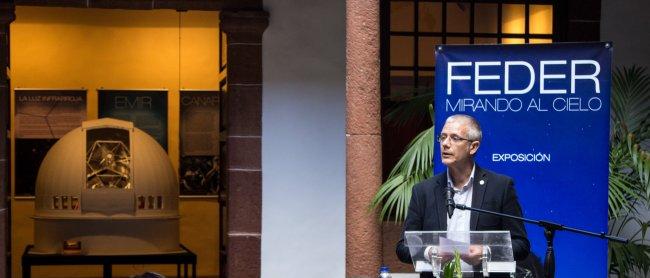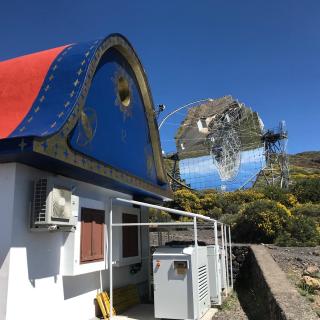“The GTC provides very important observations in many different fields of astrophysics, from our own Solar System, the study of planets around other stars, through the evolution of the stars and the galaxies from the primordial epoch in which the Universe was formed”.
“La Palma is, without doubt, one of the best sites on the planet for observing the night sky”.
“ One could devote many paragraphs to each of these aspects. Every year we approach the schools, and then we show the Roque de los Muchachos Observatory and the GTC to more than 800 secondary school students in the whole of the island”.
By Alejandra Rueda Moral
Question: What is the importance of this kind of conferences?
Reply: I think that the main motive for this conference is to bring together the community of astrophysicists who work with the GTC to share their scientific and technological advances, to improve its use, encourage collaborations which promote new ambitious projects, and define its future.This is done via the presentation and discusión of the most relevant scientific results obtained until now, as well as by the interchange of experience leading to an improved use of the telescope, and promote knowledge about the GTC in the community as a whole. The discussion sessions also help us to define the strategy to follow in the coming years to extract the full scientific potential of this large telescope and to enhance is international competitiveness.
Q: What will be the next instruments to be installed on the GTC and what will they help to discover?
R: We are in a frenetic phase of increase in the instrumental capabilities of the GTC. Until 2015 there were only two scientific instruments, OSIRIS and CanariCam. Now we have four installed on teh telescope and expect to receive three more between 2019 and 2020. Without going into detail about the unique characteristics of each instrument the overall aim is to observe and anlyze with máximum detail the light from the universe in the visible and infrared range which reach the ground through the atmosphere. In this way the GTC will provide observations of great importance in very different fields of astrophysics, from our Solar System, to the study of planets around other stars, and going on to the evolution of stars and the galaxies from the primordial epoch in which the universo was formed.
Q: How does the GTC benefit from being on La Palma?
R: One of the best telescopes in the world has to be in one of the best sites in the world for observing the sky. This is what the mountain tops of La Palma offer, which are undoubtedly one of the best sites on the planet to observe the night sky. This is due to the high sky transparency of the Canary sky, but also because this quality has been preserved from the threat of light pollution from the artificial lights of the cities and roads. The collaboration of the authorities and the support of the local population is another point which we look for and need in order to fully integrate our front-line scientific installation in the global development of the island.
Q: And how does the GTC benefit the island?
R: Work, investment, education, training in high technology jobs, international visibility, and instilling the importance of science and technology for building a more robust economic model and a better future.
I could devote many paragraphs to each and every one of these aspects. Every year we approach the schools, and then we show the Roque de los Muchachos Observatory and the GTC to over 800 secondary school students in the whole island. We have some 8,000 visistors per year to the telescope, the majority of them tourists. Over half of our employees are from La Palma, among them the four senior managers. We have over 100 suppliers on the island who give us all kinds of services, in which we spend 200,000 euros per year, as well as paying our local taxes, basic services such as water, electricity, diésel fuel, telephone, insurance, and the salaries of GTC personnel, which are mainly spent in La Palma. I think that these are significant numbers.



